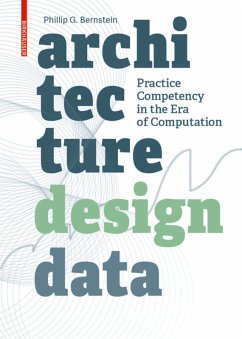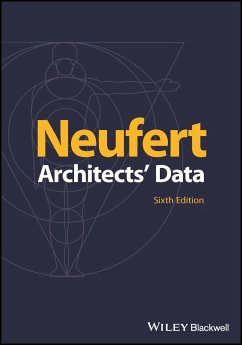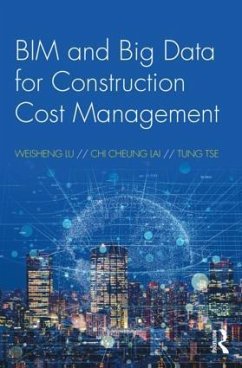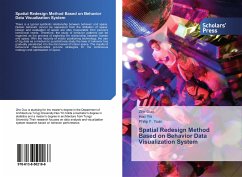
Data-Driven Design and Construction
25 Strategies for Capturing, Analyzing and Applying Building Data
Versandkostenfrei!
Versandfertig in über 4 Wochen
75,99 €
inkl. MwSt.
Weitere Ausgaben:

PAYBACK Punkte
38 °P sammeln!
"In this comprehensive book, Professor Randy Deutsch has unlocked and laid bare the twenty-first century codice nascosto of architecture. It is data. Big data. Data as driver. . .This book offers us the chance to become informed and knowledgeable pursuers of data and the opportunities it offers to making architecture a wonderful, useful, and smart art form." --From the Foreword by James Timberlake, FAIA Written for architects, engineers, contractors, owners, and educators, and based on today's technology and practices, Data-Driven Design and Construction: 25 Strategies for Capturing, Applying ...
"In this comprehensive book, Professor Randy Deutsch has unlocked and laid bare the twenty-first century codice nascosto of architecture. It is data. Big data. Data as driver. . .This book offers us the chance to become informed and knowledgeable pursuers of data and the opportunities it offers to making architecture a wonderful, useful, and smart art form." --From the Foreword by James Timberlake, FAIA Written for architects, engineers, contractors, owners, and educators, and based on today's technology and practices, Data-Driven Design and Construction: 25 Strategies for Capturing, Applying and Analyzing Building Data * addresses how innovative individuals and firms are using data to remain competitive while advancing their practices. * seeks to address and rectify a gap in our learning, by explaining to architects, engineers, contractors and owners--and students of these fields--how to acquire and use data to make more informed decisions. * documents how data-driven design is the new frontier of the convergence between BIM and architectural computational analyses and associated tools. * is a book of adaptable strategies you and your organization can apply today to make the most of the data you have at your fingertips. Data-Driven Design and Construction was written to help design practitioners and their project teams make better use of BIM, and leverage data throughout the building lifecycle.













